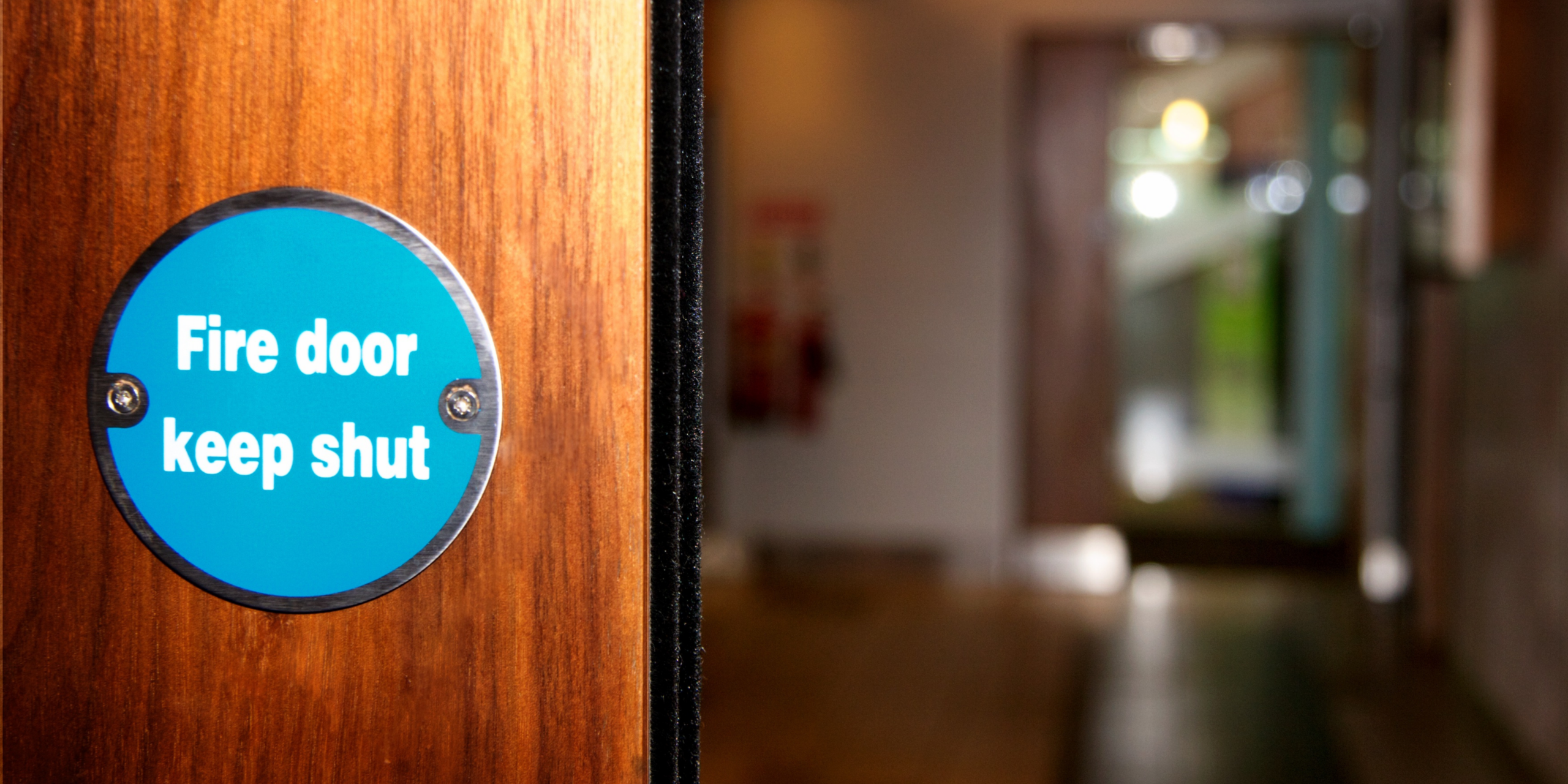Why are Fire Doors Important?
Fire doors are essential tools for fire protection. They shield the people, property and assets. The purpose of a fire door is to slow down and protect against the spread of fire, smoke and heat throughout the building. In addition, a fire door will minimise structural damage. Creating a barrier between the fire and everything it could affect if left unchecked, namely, people and buildings.
As mentioned, fire doors slow down the expansion of smoke and heat throughout a building. They do this by providing an additional layer of separation between what’s burning or smouldering and then everything else around it. Fire doors provide crucial extra time that can save lives.
Let’s explore the purpose of a fire door further. What they are, why they’re essential, and how to ensure you’ve selected the best fire door for your building.
The Purpose of a Fire Door
In short, the purpose of a fire door is to:
- Help keep people safe.
- Provide a barrier.
- Slow the spread of smoke and heat.
- Slow the spread of fire.
- Add essential evacuation time.
- Protect lives.
- Minimise structural damage.
- Allow safer access for fire fighters.
Fire Doors Keep People Safe
Fire doors are a vital part of any building. Vital in protecting the people inside from the fire by preventing smoke and heat from entering occupied spaces. While they may not be as flashy or exciting pieces of equipment, they are without question one of the most important.
The purpose of a fire door is to keep people safe. Fire doors are a legal requirement for commercial buildings. They’re tested to make sure they work before being installed, and when needed can be opened quickly in an emergency situation by anyone. All this means that if you have a fire door in your building:
- You can rest easy knowing that it’s doing its job for you. Keeping out potentially harmful elements.
- Your employees and guests will be safer than ever before.
Fire Doors Provide a Barrier
The purpose of a fire door is to provide a barrier, therefore the assembly is crucial. Fire doors need to maintain their integrity when exposed to extreme temperatures so they must be made from materials that do not melt at high temperatures.
Assembly consists of a fire-resistant door, which may be solid or with vision panels, closers, door furniture and intumescent seals. Typically the barrier can withstand flames for between 30 minutes to 4 hours in compliance with BS EN 1634-1:2004.
Doors are the first line of defence against fire, smoke and heat. Fire doors are designed to slow the spread of fire, smoke and heat by meeting specific standards set by British Standards.
These standards ensure that a fire door will perform as intended when it comes into contact with an open flame.
Fire door slamming? Learn how to stop this here

Fire Doors Slow the Spread Smoke and Heat
Fire doors are designed to slow the spread of heat and smoke through the use of intumscent seals. They will not allow the spread of smoke and heat. Fire doors can be designed to be self-closing when the door is opened to reduce the amount of smoke that passes through. This helps keep people safer by reducing exposure to smoke and heat.
Fire Doors Provide Essential Evacuation Time
Adequate fire door protection is essential for occupant safety. Fire doors are allocated an FD rating. FD ratings will indicate the amount of time that fire door can withstand fire for.
- FD30 will withstand 30 minutes.
- FD60 will withstand 60 minutes.
- FD90 will withstand 90 minutes.
- FD120 will withstand 120 minutes
Ratings work up to FD120 which will provide 2 hours of protection. Provided the fire is on the other side of the fire door, people will have more than enough time to evacuate a building.
The minimum time required to evacuate a building is dependent on the number of fire doors that need to be passed. Evacuation times should vary from 2 minutes in a well-designed building to 5 minutes in an average office building.
Fire doors slow and reduce the spread of fire and smoke by acting as barriers that restrict travel up or down corridors, stairwells and landings. In addition, they provide essential evacuation time which results in minimising structural damage due to fire exposure.
Fire Doors Provide Safer Access for Firefighters
Fire doors are an essential safety feature that allows firefighters to reach a building’s interior in order to fight the fire. They also protect firefighters from heat and smoke.
In conclusion, it’s safe to say that the purpose of a fire door is obvious. They are incredibly valuable to us all. They provide a barrier against fire and smoke, slow the spread of heat and smoke, provide essential evacuation time by slowing down the spread of fire, minimise structural damage caused by fire and allow for safe access for emergency services. The importance of this cannot be understated as it is imperative that everyone has access to this kind of protection in their homes or workplaces.
Conclusion
Fire doors are incredibly valuable to us all. They provide a barrier against fire and smoke, slow the spread of heat and smoke, provide essential evacuation time by slowing down the spread of fire, minimise structural damage caused by fire and allow for safe access for emergency services. The importance of this cannot be understated as it is imperative that everyone has access to this kind of protection in their homes or workplaces. The importance of this cannot be understated as it is imperative that everyone has access to this kind of protection in their homes or workplaces.